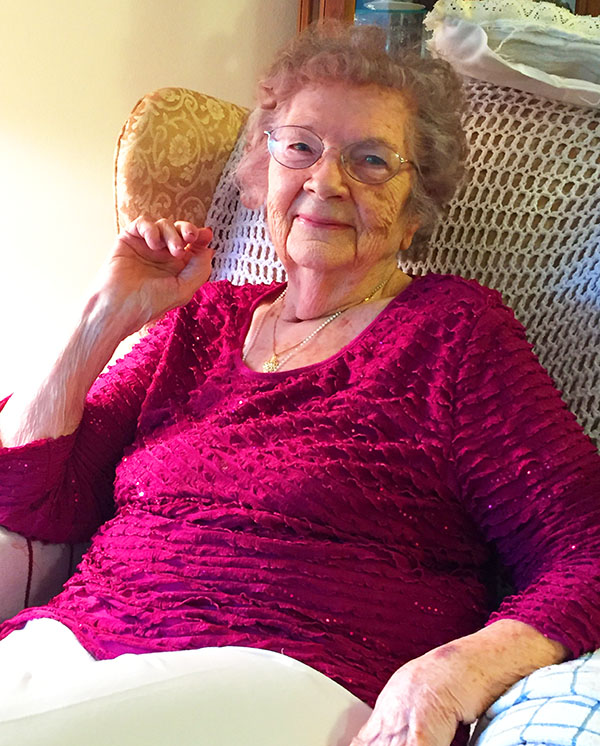Learning lessons from misfortune, tragedy and mistakes is one of the most common yet frustrating parts of life. We see it play out in different nuances and adages: in sports, we’re comforted that we learn more from a loss than a victory; in education and business, making mistakes is how we learn; in life events, the sad moments toughen us up and build character.
That last one becomes the finishing focal point and lasting discussion topic of the new documentary, “Sky So Blue,” an intimate one-hour perspective on five victims of the 9-11 terrorist attacks in 2001 from executive producer Timothy P. Oliver. The film is directed by David L. Trapasso Jr. and Michael J. Finnegan and is based on Oliver’s 2016 book, “Finding Fifteen,” which, like the documentary, looked at a select group of victims, their lives, their final movements on 9-11 and the aftermath for their families.
Timothy P. Oliver, left, and Gary MacNamara discuss Sky So Blue documentary.
In the premier I viewed at the 400-seat, beautifully renovated Sacred Heart University Community Theatre in Fairfield, Connecticut, on September 7th, Oliver and Trapasso were there to discuss their work. In a pre-show onstage Q&A with Oliver, Gary MacNamara, SHU’s executive director of public safety and government affairs, said the film brought life to the victims and asked Oliver about takeaways he had from his work. Oliver said, “People will see these five Americans and their families and how the attacks impacted and united the country but wonder how the greatest country can be divided so much in the time since. We see in these five how to love again, hope again and survive. The families have persevered. I’m proud to call the family members friends. They are amazing people. I hope the five people in the film touch viewers’ lives. This was an honor to do. I’ve been blessed that these people were brought into my life.”
Oliver began the evening with a moment of silence for the thousands of victims, service members and the hundreds of first responders who died. He had begun this journey into 9-11 research from his daily commute starting in 2016 to work in Lower Manhattan when Golf Digest magazine was moved in with the rest of the Conde Nast magazines into the Freedom Tower. Tim was an art designer there (he now does the same for The New York Times), and I was a coworker of his for many years as one of the editors. His somber walk past the 9-11 memorial site where the Twin Towers stood was something we all felt as we entered the building. From my office spot on the 27th floor, actually, I could turn and look down on the twin waterfalls and see the hundreds of people who were gathered all day long at any moment of the day, strolling around the memorial. When I left work at night, I usually took a diagonal path across the memorial to head to the subway station I entered. Nearly every time I walked through the area, I never heard a word of English. The site was visited by foreign visitors from around the world each and every day. Some had the wrong attitude of treating the area like a novelty tourist locale and gaped for photos. It reminded me of foreigners who would act that way at the Liberty Bell in Philadelphia, goofing for photos in a way that made me think they didn’t realize the true meaning and symbolism of freedom that the bell represents.
At the 9-11 Memorial, however, the overall mood was respectful and you could see in people an understanding of the horrific event that took place and the senseless destruction of soul and building that was done. As if we need to have these constant reminders, it is understood there quite vividly that mankind truly has no boundaries in the hurt it can inflict on itself.
Tim would have likely been with me on September 11, 2001, working at the Golf Digest office, which at the time was in Trumbull, Connecticut, and just down the street from the SHU campus, where staff quickly tuned into the small TV in the main editor’s office and watched the attacks occur. Fifteen years later, Tim took the daily walks past the memorial as a motivating force to know the victims better and he randomly picked out 15 to profile in his book. From there he chose five to go greater in depth for the film. There was John Skala, a police officer who ran toward danger; Diane Urban, a tax auditor who could have saved herself but stayed and wouldn’t leave a wounded friend; Romeo Bishundat, a young man on duty to protect his country; Tony Luparello, a maintenance man/custodian who had survived the earlier terrorist bombing attack on the North Tower in 1993; and flight attendant Amy Nicole Jarret, who had gone to work that day filling in for a co-worker.
At the concluding moments of the documentary, it diverts from a study of the horrific ending to five lives among thousands and the sacrifices they made to what this blog started with: how do we learn from tragedies. First to be analyzed is, what do we take from this grievous loss of life? How do families, friends, the country, the world recover from an attack that was so vicious and cruel? How do we honor those who perished? How can we learn from the bravery of so many? Left unstudied—rightfully so, I feel—is the motivation for the attack itself. It was senseless and the attackers demonstrated how they had no respect for life. It was correct to not delve into any motivation on their part.
From telling the story of the featured five victims, the film jolts us back to the present and moves us into a surprise direction, bringing to focus one of the film’s “catchphrases”: United for days after, divided for years since. That refers to how the attacks brought the U.S.—and a great deal of the world—together in a unified reaction to the attacks but 20 years later the United States of America is in a great divide, politically and socially. A country that was built by a diverse group of forefathers to establish ideals that they agreed upon through compromise now is split between reality and delusion, truth and lies, sacrifice and selfishness, common sense and no sense. Compromise? That’s for sissies. There’s only one way: mine.
The film doesn’t make conclusions on how to solve this massive polarization although common sense says an end to the deliberate delusional pattern of mistruths would help. But the film does make a unifying statement that the memory of the victims of the September 11th, 2001, attacks on America call out for the nation to learn from their sacrifice, their bravery and the way the country came together because to do otherwise is to not appreciate what we have. We can see how it can all easily be taken away if we don’t stand unified and on our guard.
———
“Sky So Blue” was the Winner of the Best U.S. Documentary at the Seattle Film Festival, and Best Documentary Feature at the New York International Film Awards. It received Honorable Mention at the Macoproject Film Festival 2021. It was an Official Selection at the 2021 Chesapeake Film Festival, the Chautauqua International Film Festival CIFF 2021, the DWF LA Film Festival, and Seattle Film Festival.





























